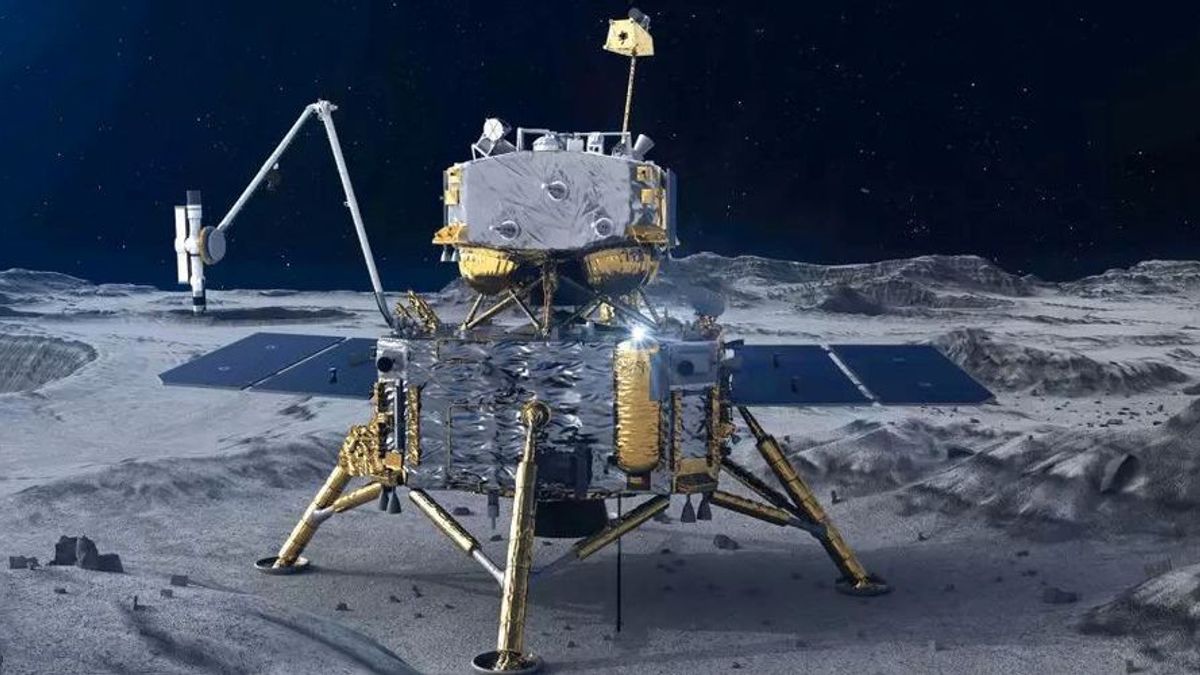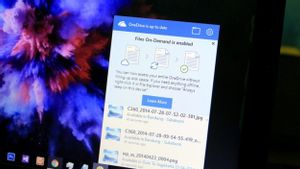JAKARTA - Chinese scientists recently examined rock samples collected from the Moon, and after doing so, found much younger volcanic activity than has ever been found before.
The moon is an interesting entity for many reasons. It is vital to life on Earth, as it became one of the most prominent sights in the night sky, and was an important component of the Space Race during the Cold War. Despite all that, the Moon has taken a bit of a backseat in space exploration in recent years.
There have only been six manned landings on the Moon in NASA's history. Starting with Apollo 11 in July 1969 and ending with Apollo 17 in December 1972, activity on the Moon has been extremely rare since then.
Thankfully, that quickly changed. NASA is working with SpaceX to bring humans back to the Moon in the not too distant future. Astronauts will board an optimized version of the Starship spacecraft, visit the Moon, and return to Earth, all in about 6-7 days.
While there is still work to be done before the mission is ready for launch, China has just reached a major milestone with the China Lunar Exploration Program (specifically with the Chang'e 5 lander).
Chang'e 5 landed on the Moon on December 16, 2020, with the aim of collecting and returning lunar samples for scientists to study on Earth. Chang'e 5 not only marks the first Chinese mission to acquire lunar samples, but they have now been tested and analyzed.
After initial inspections, Chinese scientists have discovered something extraordinary — volcanic activity was occurring on the Moon much earlier than previously known.
Volcanic activity on the Moon is not a new concept. In fact, scientists have known for decades that volcanism exists there. What's interesting about this latest sample is the age of the volcanic activity detected in it.
Between the Apollo and Luna programs, astronomers have determined that most volcanic activity on the Moon occurred between 3.8 and 3 billion years ago - with some of the oldest activity dating back over 4 billion years.
In the samples collected by Chang'e 5, there are traces of volcanism from just 2 billion years ago. That's a long time ago, but that means lava was flowing through the Moon a billion years earlier than we previously thought.
This latest sample was obtained in the Oceanus Procellarum region on the Moon. This is the area on the near side of the Moon and the only one with the name Oceanus (because of its enormous size that stretches more than 1.600 miles from north to south).
Now that astronomers know there was volcanic activity in this area a billion years ago, they can use that information to view the crater on Oceanus Procellarum, compare it to craters of the same age at other locations (such as Mars), and gain a better understanding. of the Solar System as a whole.
SEE ALSO:
This is a process often referred to as 'crater counting', and is a must for understanding the science of what is happening in our galaxy. As Ian Crawford of the University of London notes, "It's really important to get more data points. That's what this paper has done."
As is often the case, a breakthrough like this doesn't mean the job is done. In fact, the findings of Chang'e 5 raise several new questions for scientists to ponder. For one thing, it's not clear what caused volcanic activity on the Moon two billion years ago. There may be residual uranium, thorium, and potassium stored deep within the Moon that is hot enough for volcanism to occur.
Another possibility is that the Moon's closer position to Earth at that time provided the needed heat. In addition, there are other areas on the Moon that suggest volcanic activity could have occurred at least 50 million years ago. There are many questions that need to be answered. Regardless, it's a major achievement and a sizeable step forward in a better understanding of the star system we call home.
The English, Chinese, Japanese, Arabic, and French versions are automatically generated by the AI. So there may still be inaccuracies in translating, please always see Indonesian as our main language. (system supported by DigitalSiber.id)


















